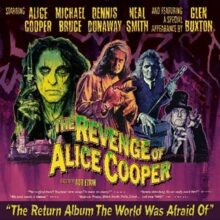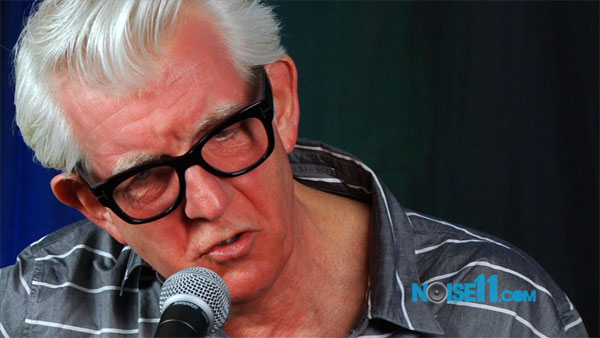The fusion of Pink Floyd’s iconic album “Dark Side of the Moon” with the classic film “The Wizard of Oz” is a legend that has intrigued fans and audiophiles for decades. This synchronization, often referred to as “The Dark Side of the Rainbow,” suggests that the album, when played in conjunction with the film, produces uncanny coincidences that seem too deliberate to be mere chance. Recently, David Gilmour, the legendary guitarist of Pink Floyd, addressed these longstanding rumours in an interview, shedding light on the band’s perspective.
The idea that there is a hidden connection between “Dark Side of the Moon” and “The Wizard of Oz” began to circulate widely in the 1990s, long after the album’s release in 1973. Fans and conspiracy theorists claimed that if you started the album’s first track at precisely the moment the MGM lion roars for the third time at the film’s beginning, the music and lyrics would eerily align with the film’s visuals. Examples include the lyric “balanced on the biggest wave” coinciding with Dorothy’s tightrope walk on the fence and the sounds of a heartbeat matching the appearance of the Tin Man.
In the interview, David Gilmour unequivocally dismissed the idea that “Dark Side of the Moon” was intentionally crafted to sync with “The Wizard of Oz.” Gilmour stated, “It’s complete nonsense. I think it’s just a wonderful coincidence that people have latched onto over the years, but there was never any intention of synchronizing anything with the film.”
Gilmour went on to explain that the band was focused on creating a concept album that explored themes of conflict, greed, time, and mental illness. “Our primary concern was to push the boundaries of what we could do musically and sonically,” he said. “The idea that we would base our work on a film from 1939 is, frankly, laughable.”
To understand why the synchronization theory lacks credibility, it’s crucial to delve into the album’s creation. “Dark Side of the Moon” was a result of meticulous planning and experimentation. Roger Waters, the band’s bassist and primary lyricist, conceived the album’s central themes and wrote much of the lyrics. The album was recorded at Abbey Road Studios and utilized innovative recording techniques, including tape loops and synthesizers, which were groundbreaking at the time.
Alan Parsons, the album’s engineer, played a significant role in its production. His technical expertise and the band’s willingness to experiment with sound effects and unconventional recording methods contributed to the album’s unique sound. The heartbeats, cash registers, and clocks that are now iconic elements of “Dark Side of the Moon” were all meticulously crafted to enhance the listener’s experience of the album’s thematic journey.
Despite Gilmour’s clarification, the myth of “The Dark Side of the Rainbow” persists. Fans continue to experiment with synchronizing the album and the film, finding joy in the coincidental moments of alignment. This phenomenon has become a part of the album’s rich legacy, adding a layer of mystique and intrigue that continues to captivate new generations of listeners.
In some ways, the legend has taken on a life of its own, independent of the band’s original intentions. It serves as a testament to the enduring impact and versatility of “Dark Side of the Moon,” an album that continues to resonate with audiences nearly half a century after its release. The synchronization theory has inspired countless discussions, articles, and even public screenings where fans gather to experience the unlikely pairing.
The persistence of such myths highlights the powerful connection between fans and the music they love. These theories and legends often enhance the listening experience, providing fans with new ways to engage with and interpret the music. For Pink Floyd, a band known for its enigmatic and often cryptic approach to music, the myth of “The Dark Side of the Rainbow” is just one of many that surround their body of work.
Gilmour acknowledged this phenomenon, saying, “I can understand why people are fascinated by these kinds of stories. Music is a very personal experience, and everyone brings their own interpretation to it. If people enjoy the idea of synchronizing our album with ‘The Wizard of Oz,’ then good for them. But it’s important to remember that it’s just a coincidence.”
David Gilmour’s recent comments put to rest the idea that “Dark Side of the Moon” was purposefully crafted to sync with “The Wizard of Oz.” While the synchronization theory remains a popular myth among fans, it is ultimately a testament to the album’s timeless appeal and the deep connection listeners feel to Pink Floyd’s music. The band’s focus was always on pushing creative boundaries and exploring complex themes, a mission that has left an indelible mark on the history of music.
As fans continue to find new ways to experience and interpret “Dark Side of the Moon,” the album’s legacy only grows richer. Whether you believe in the myth of “The Dark Side of the Rainbow” or see it as a delightful coincidence, there is no denying the profound impact of this legendary album on the world of music and beyond.
Stay updated with your free Noise11.com daily music news email alert. Subscribe to Noise11 Music News here
Be the first to see NOISE11.com’s newest interviews and special features on YOUTUBE and updated regularly. See things first SUBSCRIBE here: Noise11 on YouTube SUBSCRIBE

















